On July 23, 2020, the Department of the Treasury and the Internal Revenue Service (collectively, Treasury) published in the Federal Register final regulations under the global intangible low-taxed income and Subpart F provisions of the Code regarding the treatment of income that is subject to a high rate of foreign tax (the GILTI high-tax exclusion). On the same date, Treasury published in the Federal Register proposed regulations providing guidance under Section 954(b)(4) (the Subpart F high-tax exception). The final and proposed regulations affect U.S. shareholders of foreign corporations. Some of the key highlights to the GILTI high-tax exclusion final regulations and Subpart F high-tax exception proposed regulations are summarized below.
Details
GILTI High-Tax Exclusion
On June 21, 2019, Treasury published proposed regulations (REG-101828-19) under Sections 951, 951A, 954, 956, 958, and 1502 in the Federal Register (84 FR 29114, as corrected at 84 FR 37807). The 2019 proposed regulations in part provided that an election may be made for a controlled foreign corporation (CFC) to exclude under Section 954(b)(4), and thus to exclude from gross tested income, gross income subject to foreign income tax at an effective rate that is greater than 90% of the rate that would apply if the income were subject to the maximum rate of tax specified in Section 11 (18.9% based on the current rate of 21%) regardless of whether the income would otherwise be foreign base company income (as defined in Section 954) or insurance income (as defined in Section 953).
The final regulations finalize the 2019 proposed regulations under Sections 951A and 954 regarding the treatment of income subject to a high rate of foreign tax but do not finalize the portions of the proposed regulations under Sections 951, 956, 958, and 1502 regarding the treatment of domestic partnerships. Treasury notes in the preamble to the final regulations that those regulations are planned to be finalized separately.
In lieu of the qualified business unit (QBU) standard in the 2019 proposed regulations, the final regulations generally apply the GILTI high-tax exclusion based on the gross tested income of a CFC that is attributable to a “tested unit.” The final regulations provide that a tested unit includes a CFC. A tested unit also generally includes an interest in a pass-through entity held, directly or indirectly, by a CFC if either (i) the pass-through entity is a tax resident of a foreign country or (ii) the pass-through entity is not subject to tax as a resident but is treated as a corporation (or as another entity that is not fiscally transparent) for purposes of the CFC’s tax law. For this purpose, a pass-through entity is defined to include, for example, a partnership or a disregarded entity. A CFC’s interest in a pass-through entity (or the activities of a branch) that is not a tested unit is a “transparent interest.”
In addition, a tested unit includes a branch, or a portion of a branch, the activities of which are carried on directly or indirectly by a CFC, provided that either (i) the branch gives rise to a taxable presence in the country in which the branch is located, or (ii) the branch gives rise to a taxable presence under the owner’s tax law, and the owner’s tax law provides an exclusion, exemption, or other similar relief (such as a preferential rate) for income attributable to the branch.
The final regulations generally provide that tested units of a CFC (including the CFC tested unit), other than certain non-taxed branch tested units, are treated as a single tested unit if the tested units are tax residents of, or located in, the same foreign country. This combination rule applies without regard to whether the tested units are subject to the same foreign tax rate and is not conditioned on the tested units having the same functional currency. Also, the combination rule is mandatory and not elective.
The final regulations retain the consistency rule in the 2019 proposed regulations that generally provides that if a CFC is a member of a controlling domestic shareholder group (CFC group), a GILTI high-tax exclusion election (or revocation) is either made with respect to each member of the CFC group or is not made for any member of the CFC group. The final regulations revise the definition of a CFC group to be an affiliated group, as defined in Section 1504(a), with certain modifications that broaden the definition.
The final regulations do not include the 60-month restriction from the 2019 proposed regulations, and, subject to the consistency requirement, taxpayers may elect the GILTI high-tax exclusion on an annual basis.
The final regulations clarify that the controlling domestic shareholders must provide notice of elections (or revocations), as required by §1.964-1(c)(3)(iii), to each U.S. shareholder that is not a controlling domestic shareholder.
The final regulations provide that the election may be made (or revoked) on an amended federal income tax return only if all U.S. shareholders of the CFC file amended federal income tax returns (unless an original return has not yet been filed, in which case the original federal income tax return may be filed consistently with the election (or revocation)) for the taxable year (and for any other taxable year in which their U.S. tax liabilities would be increased by reason of that election (or revocation), or in the case of a partnership if any item reported by the partnership or any partnership-related item would change as a result of the election (or revocation)), within 24 months of the unextended due date of the original federal income tax return of the controlling domestic shareholder’s inclusion year with or within which the CFC inclusion year, for which the election is made (or revoked), ends. For administrative purposes, the final regulations also provide that amended federal income tax returns for all U.S. shareholders of the CFC for the CFC inclusion year must be filed within a single 6-month period (within the 24-month period). The final regulations also clarify how these rules operate in the case of a U.S. shareholder that is a domestic partnership.
The final regulations provide additional rules addressing disregarded payments, including providing additional detail on how the principles of §1.904-4(f)(2)(vi) should be applied. See §1.951A-2(c)(7)(ii)(B)(2).
Consistent with the applicability date in the 2019 proposed regulations, the final regulations provide that the GILTI high-tax exclusion applies to taxable years of foreign corporations beginning on or after July 23, 2020, and to taxable years of U.S. shareholders in which or with which such taxable years of foreign corporations end.
However, the final regulations permit taxpayers to choose to apply the GILTI high-tax exclusion to taxable years of foreign corporations that begin after December 31, 2017, and before July 23, 2020, and to taxable years of U.S. shareholders in which or with which such taxable years of the foreign corporations end. See §1.951A-7(b). Any taxpayer that applies the GILTI high-tax exclusion retroactively must consistently apply the rules in this Treasury decision to each taxable year in which the taxpayer applies the GILTI high-tax exclusion.
For additional details including items not discussed in this summary, see the final regulations.
Subpart F High-Tax Exception
The new 2020 proposed regulations propose to generally conform the rules implementing the Subpart F high-tax exception to the rules implementing the GILTI high-tax exclusion and provide for a single election under Section 954(b)(4) for purposes of both Subpart F income and tested income. Like the GILTI high-tax exclusion, the 2020 proposed regulations provide that the Subpart F high-tax exception applies on a tested unit basis.
The 2020 proposed regulations apply a more specific standard based on items of gross income attributable to the “applicable financial statement” of the tested unit.
The 2020 proposed regulations generally determine tentative net items by allocating and apportioning deductions, determined under federal income tax principles, to items of gross income to the extent the deductions are properly reflected on the applicable financial statement of the tested unit, consistent with the manner in which gross income is attributed to a tested unit.
The 2020 proposed regulations include a de minimis rule that subject to an anti-abuse provision, combines tested units (on a non-elective basis) that are attributed gross income less than the lesser of 1% of the gross income of the CFC, or $250,000. This de minimis combination rule applies after the application of the “same foreign country” combination rule in proposed §1.954-1(d)(2)(iii)(A)(1) and, therefore, combines tested units that are not residents of (or located in) the same foreign country.
The 2020 proposed regulations also include an anti-abuse rule to address cases where taxpayers may include, or fail to include, items on an applicable financial statement or make, or fail to make, disregarded payments, to manipulate the application of the high-tax exception if undertaken with a significant purpose of avoiding the purposes of Section 951, 951A, 954(b)(4), or proposed §1.954-1(d).
Additionally, the 2020 proposed regulations include an anti-abuse rule to address transactions or structures involving certain instruments or reverse hybrid entities that are undertaken with a significant purpose of manipulating whether an item of income qualifies for the high-tax exception.
The 2020 proposed regulations include a single unified election that applies for purposes of both Subpart F and GILTI, incorporating a consistency requirement parallel to that in §1.951A-2(c)(7)(viii)(A)(1) and (c)(7)(viii)(E).
Also, the 2020 proposed regulations include a contemporaneous documentation requirement to facilitate the administration of the rules regarding these elections. In addition, the proposed regulations add this information to the list of information that must be included on Form 5471 (Information Return of U.S. Persons With Respect to Certain Foreign Corporations).
The 2020 proposed regulations provide that the high-tax exception applies without regard to the limitation in Section 952(c)(1). The 2020 proposed regulations also follow current §1.951-1(a)(7), which provides that the Subpart F income of a CFC is increased by earnings and profits of the CFC that are recharacterized under Section 952(c)(2) and §1.952-1(f)(2)(ii) after determining the items of income of the CFC that qualify for the high-tax exception.
The 2020 proposed regulations provide that the high-tax exception applies before the full inclusion rule and, consequently, the special coordination rule in §1.954-1(d)(6) is eliminated.
The 2020 proposed regulations also provide that the high-tax election may be made (or revoked) on an amended federal income tax return under similar rules that apply to making (or revoking) the GILTI high-tax exclusion on an amended federal income tax return.
The 2020 proposed regulations under §1.951A-2, 1.952-1(e), and §1.954-1 are proposed to apply to taxable years of CFCs beginning after the date the Treasury decision adopting these rules as final regulations are filed with the Federal Register, and to taxable years of U.S. shareholders in which or with which such taxable years of foreign corporations end.
The 2020 proposed regulations under §1.952-1(f)(4) are proposed to apply to taxable years of a foreign corporation ending on or after July 20, 2020. As a result of this applicability date, proposed §1.952-1(f)(4) would apply with respect to recapture accounts of an acquiring corporation for taxable years of the corporation ending on or after July 20, 2020, even if the distribution or transfer described in Section 381(a) occurred in a taxable year ending before July 20, 2020.
For additional details including items not discussed in this summary, see the 2020 proposed regulations.
Insights
The ability for taxpayers to retroactively apply the GILTI high tax exclusion contained in the final regulations on an amended return may permit certain taxpayers to claim refunds for overpayments of tax in prior years.





